Introduction
From 1982 to mid-2006, 13 maritime patrol aircraft of the Lockheed Orion P-3C type were inextricably linked to the Navy Aviation Service (MLD), part of the Royal Netherlands Navy. After 2006, this military capacity was no longer replaced and permanently divested.
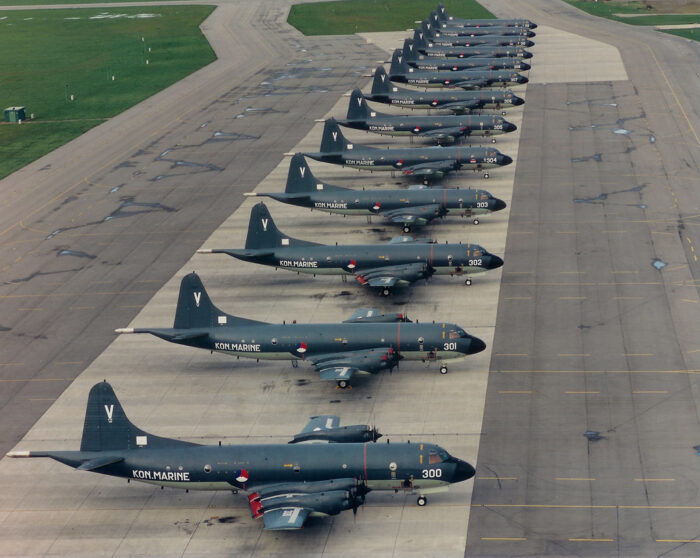
The Orion was popularly described as the "eyes, ears and teeth" of the fleet. Later, the Orion with its multifunctional capabilities became much more a part of the entire armed forces. During the Cold War in the 1980s, the aircraft was mainly used for submarine control and support of fleet associations. The submarine combat was aimed at detecting, locating and, if necessary, combating the fast, nuclear-powered ballistic missile firing. Soviet submarines. Characteristic was the permanent secondment at Naval Air Station Keflavik Iceland. In cooperation with the US Navy, the Dutch Orions flew numerous missions for detecting and locating Soviet submarines.
The support of fleet associations focused on the joint protection of the "Sea Lines of Communication" in the eastern Atlantic. From the 1990s onwards, for reasons of efficiency, the Orion was used in addition to its actual military functions for other government tasks such as Coast Guard tasks (fisheries and traffic inspection and Search and Rescue), assistance with explosive disposal, the Special Assistance Unit and hydrography. In the Caribbean part of our Kingdom, the Orions were deployed in the 'war on drugs'.
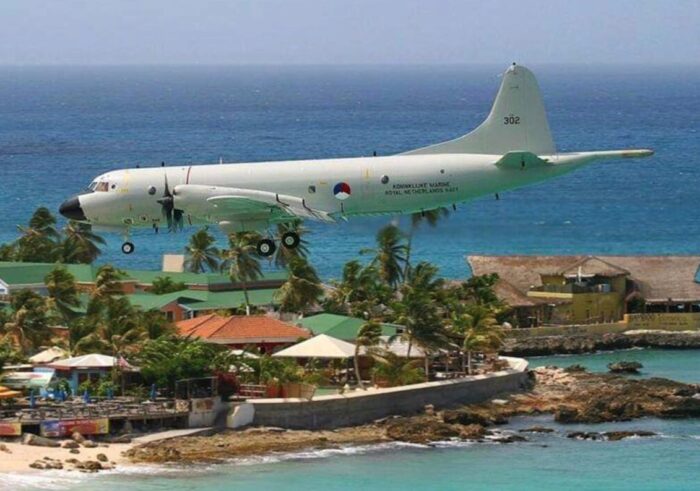
Given the extensive sensor package, the wide range and the flexible availability, the Orion was increasingly used for many joint and combined missions for the support of the other armed forces. These include the maritime blockade against the former Yugoslavian Adriatic from Sicily in Operation Sharp Guard and missions during the Kosovo crisis, including in support of the Air Force Command. Missions were also flown from the United Arab Emirates to support Operation Enduring Freedom in the Middle East as a contribution to the war on international terrorism after 9/11. Less exciting but not unimportant were the escort flights of the transits of F-16s from the Netherlands to Goose Bay in Canada with a stopover at Kevlavik, Iceland. Furthermore, the secret transfer to the Netherlands of people suspected of war crimes committed during the war in former Yugoslavia should not remain unmentioned.
Finally, in recent years, when it was already decided to sell the Orions, several missions have been flown over Afghanistan in support of special forces of the Land Forces Command. In short, the Orion represented a military capacity that was deployed for and by the entire armed forces.
In the late 1990s, three aircraft were taken out of service, which were put into storage at the company OGMA in Portugal. The remaining ten were modernized in the United States by Lockheed Martin. With the modernization, the Capability Upkeep Program (CUP), the Orion was better prepared for future military operations and the future in Dutch service seemed guaranteed until at least 2020. However, with the extensive financial cuts in 2003, the Orion fell to the ground. The sale of all 13 Orions and the closure of Marine Vliegkamp Valkenburg were part of a huge austerity operation within the armed forces.
At the end of 2004, Germany purchased eight aircraft and their simulators, tools and spare parts for €295 million. Portugal bought the remaining two modernized aircraft and also the three previously decommissioned, but not yet modernized aircraft. In total, Portugal paid 70 million euros for this.
It wasn't until mid-2006 that the last Orion left the air camp and was handed over. An important active part of the MLD disappeared forever.
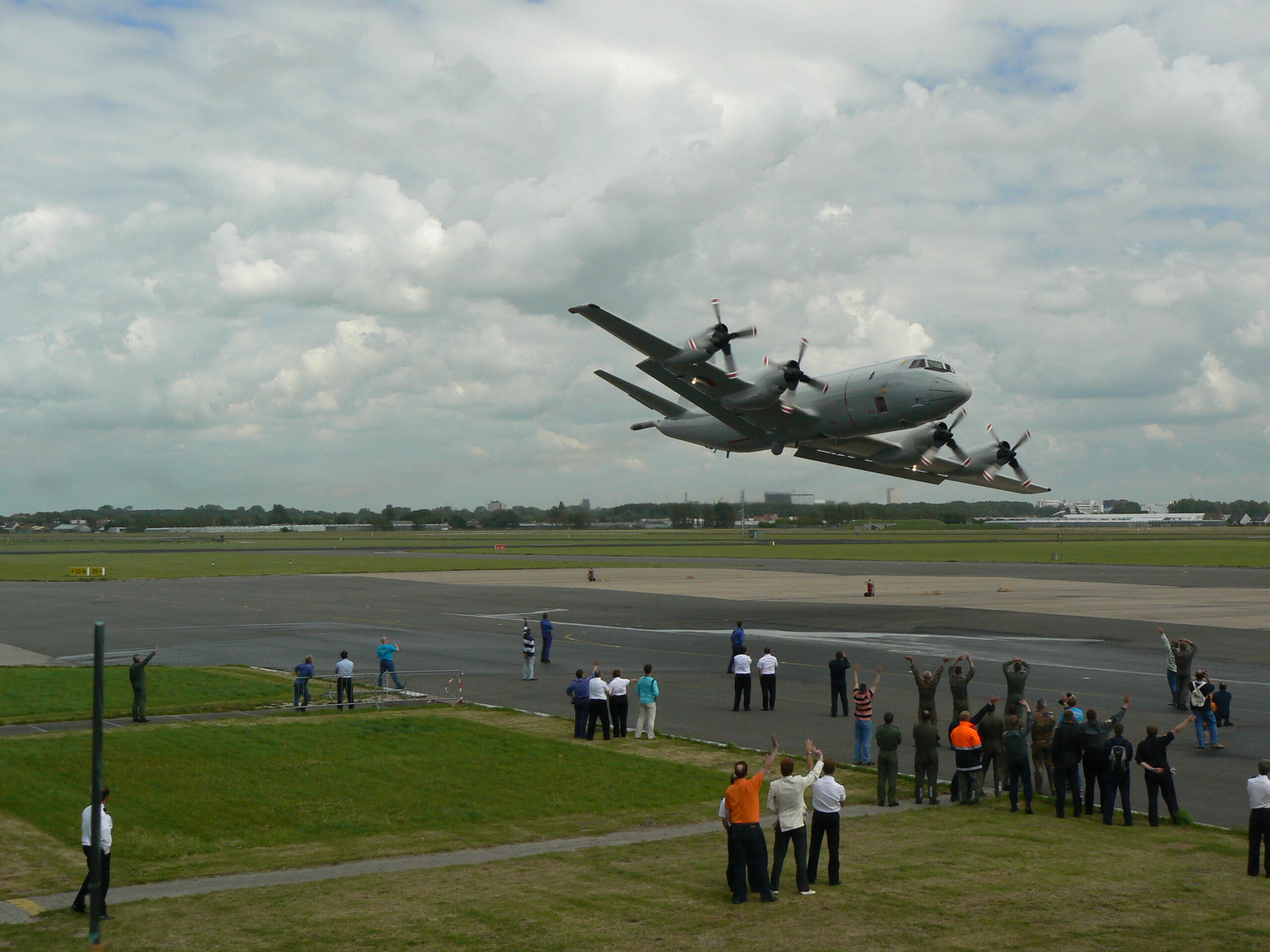
In 2023, the German Navy decided to prematurely remove its eight former Dutch Orions from the force. Six aircraft, simulators and spare parts have now been sold to the Portuguese Air Force for 45 million euros, one remains as a museum aircraft within the German armed forces and the last Orion with German registration 60+02 (= former Dutch 302) is no longer airworthy and set aside. After consultation with the Lockheed Orion 302 Foundation, the German Navy is now making this aircraft available for takeover.
Why bring a former Dutch Orion back to the Netherlands and have it included in the collection of the National Military Museum? This Orion is not complete and lacks many external parts. Moreover, the interior is almost completely missing and therefore needs to be thoroughly restored. However, this is a once-in-a-lifetime unique opportunity. Because this former Dutch Orion with its own history that is known from flying time zero, is inextricably linked to the MLD and therefore to our national military history. This Orion fits seamlessly into the range of MLD aircraft that the NMM already owns.
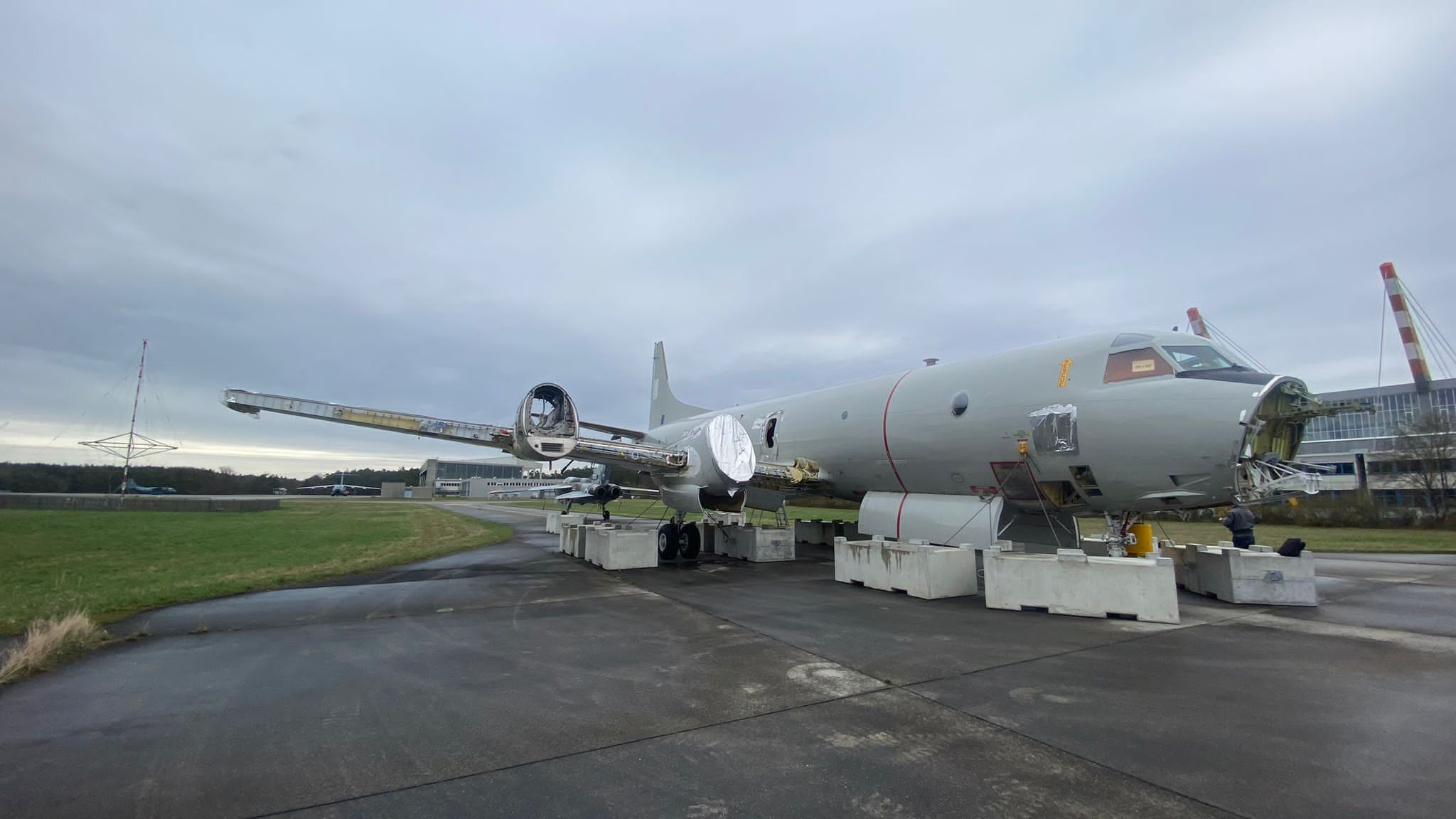
With a static display of the former MLD P-3C Orion 302 for a wide audience, the history of and about this formidable aircraft can continue. An aircraft connected to the Cold War and to numerous peacekeeping operations in the 1990s and beyond.
Museum visitors get access to all the stories they tell. The NMM will receive a special collection item. All in all, a worthy tribute to the (former) MLD-ers, veterans and to the armed forces.
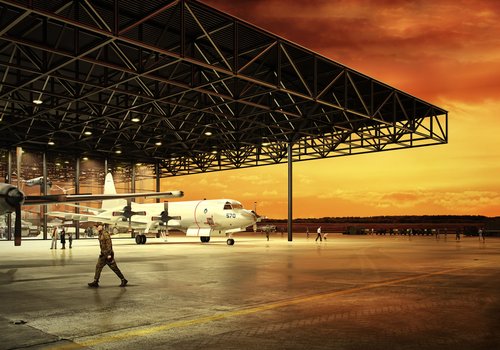
?
Mission and vision Foundation for the Preservation of Lockheed Orion 302
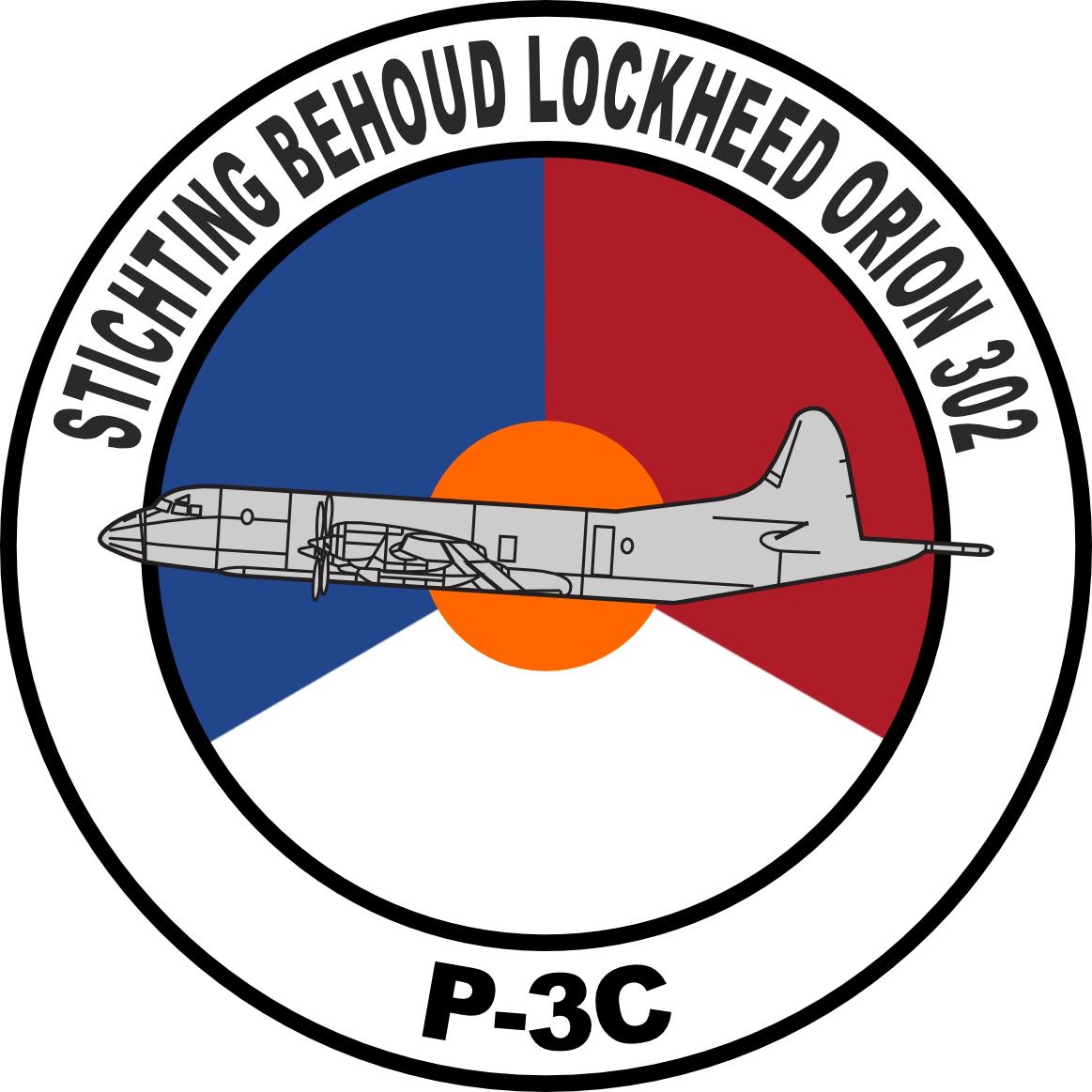
Mission and vision
The mission of the foundation is to preserve and protect the cultural, material and intangible heritage of the Navy Aviation Service and thus pass on to future generations the military history of the Lockheed P-3C Orion that served within the Dutch armed forces from 1982 to 2006.

The vision of the foundation is that knowing and making known to a broad public the (military) history of a country is important for a society that wants to think about its future.
The foundation tries to realize its mission by acquiring ownership and transporting the Lockheed P-3C Orion ?302? from Germany to the Netherlands. Then restore the aircraft in such a way that it is permanently present in museums and is included as a collection object in the National Heritage Collection of the Royal Defence Museums Foundation (SKD). With this, the Lockheed P-3C Orion and its history will always be admired in representative status by a wide audience.
Dismantling, transporting, restoring and rebuilding is an extensive and challenging job. This will mainly be done through the voluntary deployment of former MLD personnel, veterans, defence personnel and competent other human resources. In addition, young people/aspirants who follow a (technical) aviation training are involved.
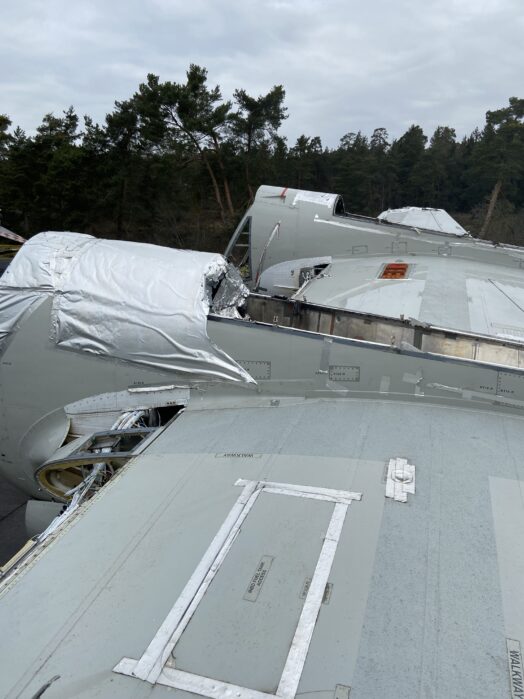
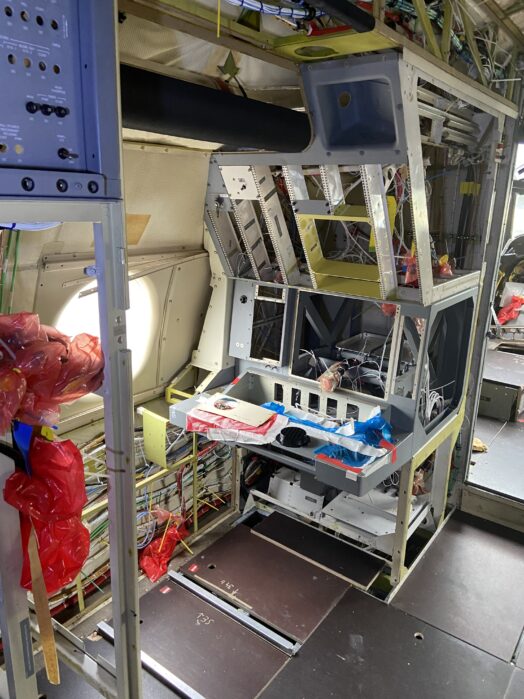
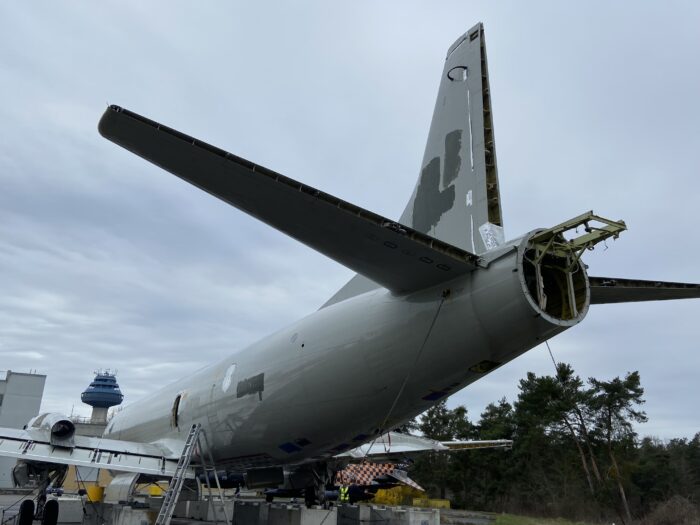
Because many external and internal parts are currently missing – the aircraft has long been used as a spare parts warehouse for the remaining German Orion fleet – it is necessary to search for and acquire missing spare parts worldwide.
All of this requires a lot of money. That is why the foundation explicitly seeks cooperation with the armed forces. The foundation will also approach funds for financial support. The foundation will also start a crowdfunding to finance all the above activities as well as the costs for the hiring of third parties, the transport, the temporary space for the aircraft for the duration of the restoration and other construction work. Of course, the foundation is not for profit
Timeline
Missing spare parts and ground support equipment (GSE)
During a visit to the Royal New Zealand Air Force (RNZAF) in August 2024, many missing spare parts necessary for the further construction of the Orion 302 have already been made available and temporarily stored there. By the end of 2025, these will come to the Netherlands by sea transport.
For the safe and damage-free transport of a Lockheed Orion 'in parts', specifically developed and certified means of transport are required. The RNZAF museum Wigram in Christchurch in New Zealand has this and has agreed to donate these funds to the foundation.
The plan is to prepare these resources for sea transport by high cube containers in November 2025, with an expected arrival in the Netherlands in January 2026.
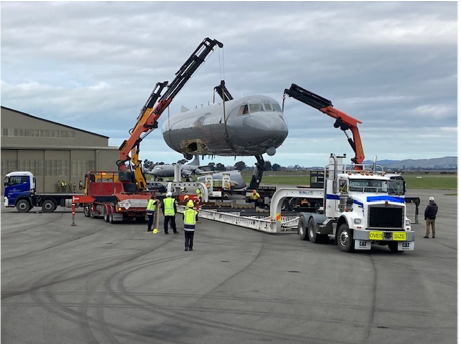
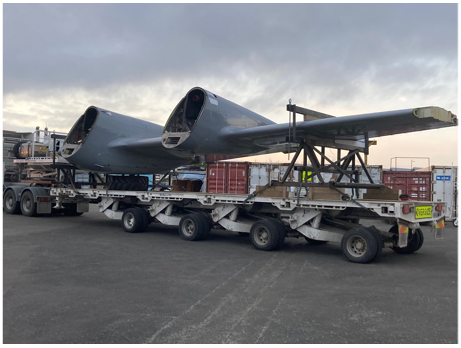
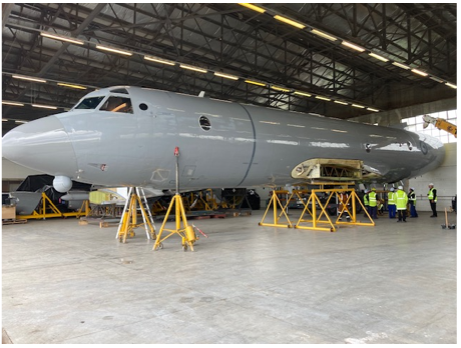
Dismantling Orion 302 in Manching (Germany)
The aircraft will be prepared for transport to the Netherlands under the direction of the CLRS Storage Service. This service has a busy summer program, in which the emphasis is on the core business; the mountains of WW II wrecks. Therefore, dismantling is expected to take place in stages over several weeks. Due to the necessary favorable weather conditions, the planning is a phased disassembly during Q2 2026.
Transport from Orion 302 by road from Germany (Manching) to NL (Air Force location)
Due to the winter conditions in Bavaria, we hope to complete the disassembly in collaboration with the Air Force salvage service in mid-April/May and plan the transport to the Netherlands. Due to the application period for special transport, this process may extend slightly to June 2026.
Search for Orion parts in Spain and Portugal and the US
Through the intervention of the respective military attachés, contact is made with the Spanish and Portuguese air forces to find out whether the parts sought are available. This is an ongoing process. Parts from the boneyard in Arizona are almost unreachable for us. Changed appointments and tightened policy of the US State Department make it virtually impossible to purchase as a private entity.
Meanwhile, the Dutch Navy attache in Washington has made contact with the office within the US Navy which is concerned with the phasing out of the P-3. We are currently discussing our wish list (Sept. 2025). Contact was also made with the squadron commander of Esq. 601 Lobos, which has been flying the former MLD Orions since 2006. At the end of this year, this squadron will own all ex-MLD crates, except V-301 and V-302. Through our contacts within Airbus Defence Systems we have learned that the Spanish Air Force wants to donate us a P-3M in exchange for training support on the F-35 and the NH-90. That is far beyond our reach and so this option goes off the table.
Start restoration on location in the Netherlands
After a long and thorough investigation of the parties involved, CLRS (the Air Force) decided not to participate in our project (Aug. 2025). The reason is that there are not enough supervisors available to supervise this process during training ( ). This decision has a huge impact on our project and could potentially mean the end. We must find a suitable location in the short term to at least bring the hull under the roof. This location must be such that appropriate control measures can be used with CMR substances such as Chromium 6.
The board is currently investigating whether the hull housed can be at the KluHV. Carrying out work at Aviolanda Businesspark (Woensdracht) has fallen due to commercial developments there.
Parts harvesting mission New Zealand 2025
From 28 October to 7 November 2025, a small team of 5 former MLDers in New Zealand will dismantle parts of the decommissioned P-3K2 fleet. These parts come from the Royal New Zealand Air Force, managed by the umbrella organization New Zealand Defence Force. This concerns parts of the outside and inside. A number of these parts have already been stored at RNZAF Woodbourne before the foundation.
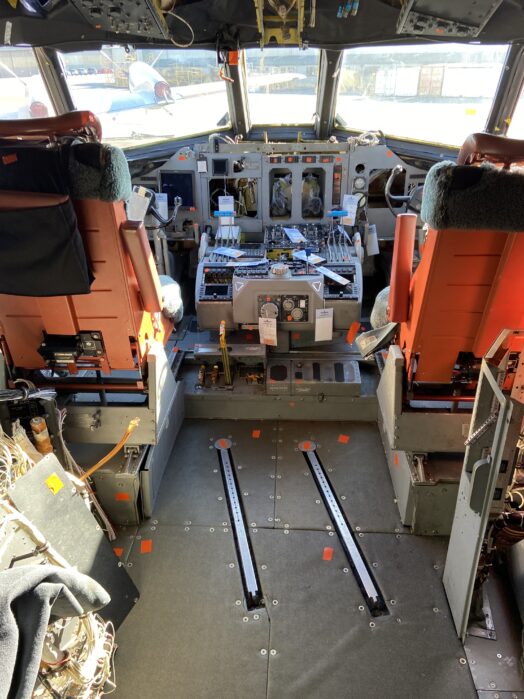
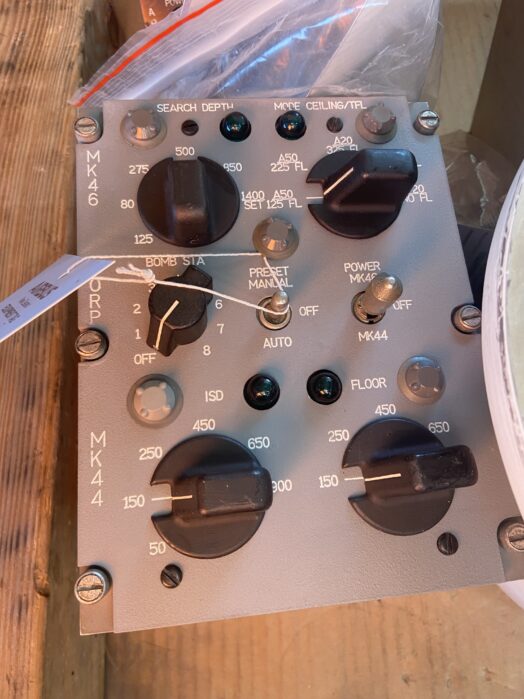
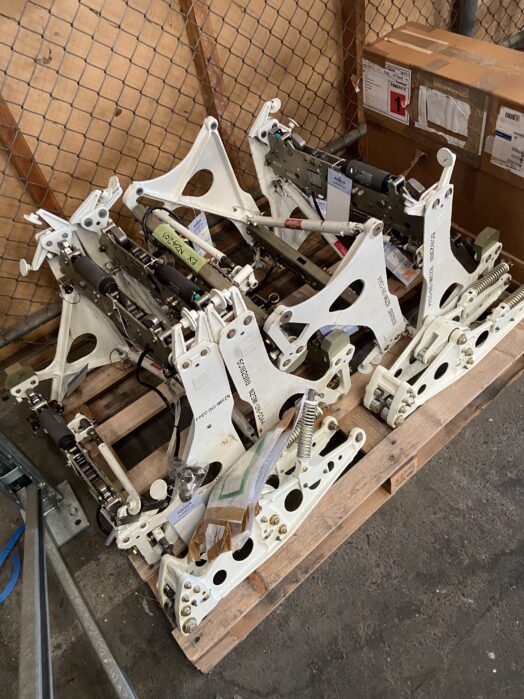
Transport Orion 302 from location NL to NMM Soesterberg
As soon as all individual components have been renovated, the aircraft will be transported to its final destination on the NMM Soesterberg. This is expected to take place in the summer months of 2027.
Tijdschema:
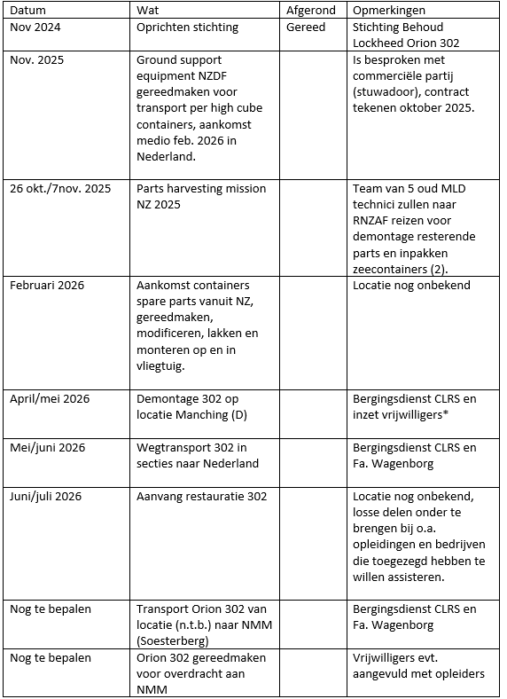
*: ideally, this can still be coordinated between salvage service, WTD 61 (Bundeswehr) and deployment of volunteers
Finance
Budget 2025-2026[1]

Remuneration policy
For a single operational volunteer, a volunteer allowance (tax-free) is available at the discretion of the board. In addition, the board provides compensation for travel expenses and other expenses incurred in the context of the project.
Financial statements will follow in the interim during the current year and the first annual financial report will follow at the end of 2025, beginning of 2026.
Cooperation
In order to carry out and complete the project, close cooperation is sought with various trainers and companies working in the aviation sector (MROs). Cooperation with the Royal Dutch Defence Museums Foundation is also crucial. In addition, the foundation works together with the Traditiekamer Marine Luchtvaartdienst (Traka MLD). The foundation aims to involve as many veterans as possible in this project and receives support from the Karel Doorman Fund. Through the intervention of CZSK, an attempt will be made to seek cooperation with the Royal Dutch Shipowners' Association. To see if the association can be helpful in the required sea transport.
Communication
As of February 2025, the website https://orion302.nl/ fully operational. It is always updated with the latest state of affairs. In addition, there will be an important role for social media, such as Facebook, Instagram and LinkedIn.
Risks
The project has risks. An overview is given below.
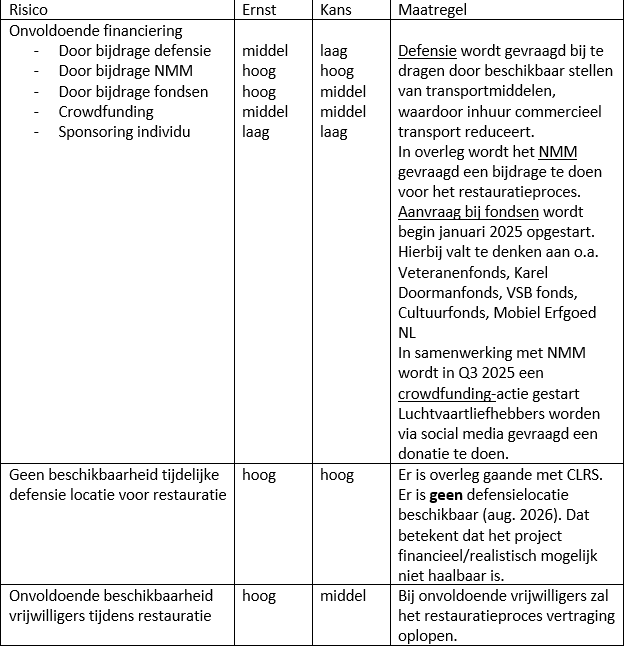
[1] A more detailed financial overview can be requested from the secretary of the foundation (secretaris@orion302.nl)